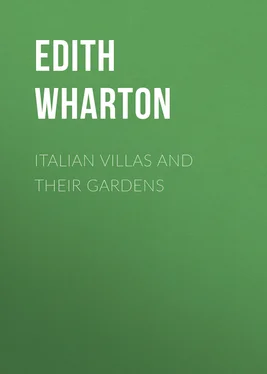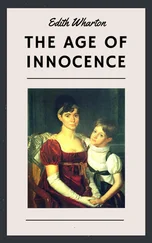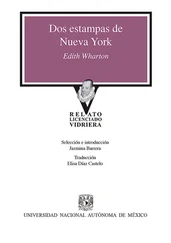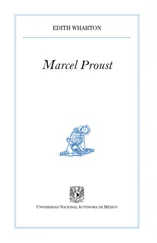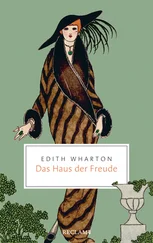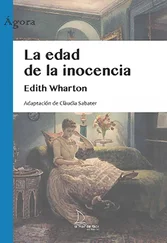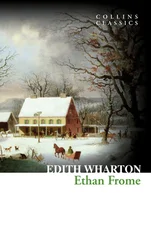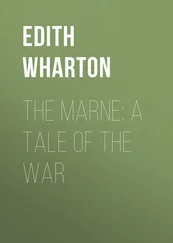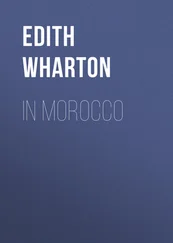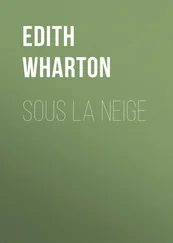Edith Wharton - Italian Villas and Their Gardens
Здесь есть возможность читать онлайн «Edith Wharton - Italian Villas and Their Gardens» — ознакомительный отрывок электронной книги совершенно бесплатно, а после прочтения отрывка купить полную версию. В некоторых случаях можно слушать аудио, скачать через торрент в формате fb2 и присутствует краткое содержание. Жанр: Путешествия и география, foreign_antique, foreign_prose, на английском языке. Описание произведения, (предисловие) а так же отзывы посетителей доступны на портале библиотеки ЛибКат.
- Название:Italian Villas and Their Gardens
- Автор:
- Жанр:
- Год:неизвестен
- ISBN:нет данных
- Рейтинг книги:3 / 5. Голосов: 1
-
Избранное:Добавить в избранное
- Отзывы:
-
Ваша оценка:
- 60
- 1
- 2
- 3
- 4
- 5
Italian Villas and Their Gardens: краткое содержание, описание и аннотация
Предлагаем к чтению аннотацию, описание, краткое содержание или предисловие (зависит от того, что написал сам автор книги «Italian Villas and Their Gardens»). Если вы не нашли необходимую информацию о книге — напишите в комментариях, мы постараемся отыскать её.
Italian Villas and Their Gardens — читать онлайн ознакомительный отрывок
Ниже представлен текст книги, разбитый по страницам. Система сохранения места последней прочитанной страницы, позволяет с удобством читать онлайн бесплатно книгу «Italian Villas and Their Gardens», без необходимости каждый раз заново искать на чём Вы остановились. Поставьте закладку, и сможете в любой момент перейти на страницу, на которой закончили чтение.
Интервал:
Закладка:
Entering a gate in the wall between the pavilions, one comes on the terraced flower-gardens, and here the same grandeur of conception is seen. The upper terrace preserves traces of its formal parterres and box-hedges. Thence flights of steps lead down to a long bowling-green between hedges, like that at the Gamberaia. A farther descent reveals another terrace-garden, with clipped hedges, statues and fountains; and thence sloping alleys radiate down to stone-edged pools with reclining river-gods in the mysterious shade of the ilex-groves. Statues are everywhere: in the upper gardens, nymphs, satyrs, shepherds, and the cheerful fauna of the open pleasance; at the end of the shadowy glades, solemn figures of Titanic gods, couched above their pools or reared aloft on mighty pedestals. Even the opposite hillside must have been included in the original scheme of this vast garden, for it still shows, on the central axis between the pavilions, a tapis vert between cypresses, doubtless intended to lead up to some great stone Hercules under a crowning arch.
But it is not the size of the Campi gardens which makes them so remarkable; it is the subtle beauty of their planning, to which time and neglect have added the requisite touch of poetry. Never perhaps have natural advantages been utilized with so little perceptible straining after effect, yet with so complete a sense of the needful adjustment between landscape and architecture. One feels that these long avenues and statued terraces were meant to lead up to a “stately pleasure-house”; yet so little are they out of harmony with the surrounding scene that nature has gradually taken them back to herself, has turned them into a haunted grove in which the statues seem like sylvan gods fallen asleep in their native shade.
There are other Florentine villas which preserve traces of their old gardens. The beautiful Villa Palmieri has kept its terrace-architecture, Lappeggi its fine double stairway, the Villa Danti its grass-walk leading to a giant on the hilltop, and Castel Pulci its stately façade with a sky-line of statues and the long cypress avenue shown in Zocchi’s print; even Pratolino, so cruelly devastated, still preserves Giovanni da Bologna’s colossal figure of the Apennines. But where so much of greater value remains to be described, space fails to linger over these fragments which, romantic and charming as they are, can but faintly suggest, amid their altered surroundings, the vanished garden-plans of which they formed a part.
II
SIENESE VILLAS
In the order of age, the first country-seat near Siena which claims attention is the fortress-villa of Belcaro.
Frequent mention is made of the castle of Belcaro in early chronicles and documents, and it seems to have been a place of some importance as far back as the eleventh century. It stands on a hilltop clothed with oak and ilex in the beautiful wooded country to the west of Siena, and from its ancient walls one looks forth over the plain to the hill-set city and its distant circle of mountains. It was perhaps for the sake of this enchanting prospect that Baldassare Peruzzi, to whom the transformation of Belcaro is ascribed, left these crenellated walls untouched, and contented himself with adorning the inner court of the castle with a delicate mask of Renaissance architecture. A large bare villa of no architectural pretensions was added to the mediæval buildings, and Peruzzi worked within the enclosed quadrangle thus formed.
A handsome architectural screen of brick and marble with a central gateway leads from a stone-paved court to a garden of about the same dimensions, at the back of which is an arcaded loggia, also of brick and marble, exquisitely light and graceful in proportion, and frescoed in the Raphaelesque manner with medallions and arabesques, fruit-garlands and brightly plumed birds. Adjoining this loggia is a small brick chapel, simple but elegant in design, with a frescoed interior also ascribed to Peruzzi, and still beautiful under its crude repainting. The garden itself is the real hortus inclusus of the mediæval chronicler: a small patch of ground enclosed in the fortress walls, with box-edged plots, a central well and clipped shrubs. It is interesting as a reminder of what the mediæval garden within the castle must have been, and its setting of Renaissance architecture makes it look like one of those little marble-walled pleasances, full of fruit and flowers, in the backgrounds of Gozzoli or Lorenzo di Credi.
Several miles beyond Belcaro, in a pleasant valley among oak-wooded hills, lies the Marchese Chigi’s estate of Cetinale. A huge clipped ilex, one of the few examples of Dutch topiary work in Italy, stands at the angle of the road which leads to the gates. Across the highway, facing the courtyard entrance, is another gate, guarded by statues and leading to a long tapis vert which ascends between double rows of square-topped ilexes to a statue on the crest of the opposite slope. The villa looks out on this perspective, facing it across an oblong courtyard flanked by low outbuildings. The main house, said to have been built (or more probably rebuilt) in 1680 by Carlo Fontana for Flavio Chigi, nephew of Pope Alexander VII, is so small and modest of aspect that one is surprised to learn that it was one of the celebrated pleasure-houses of its day. It must be remembered, however, that with the exception of the great houses built near Rome by the Princes of the Church, and the country-seats of such reigning families as the Medici, the Italian villa was almost invariably a small and simple building, the noble proprietor having usually preferred to devote his wealth and time to the embellishment of his gardens.
The house at Cetinale is so charming, with its stately double flight of steps leading up to the first floor, and its monumental doorway opening on a central salone , that it may well be ascribed to the architect of San Marcello in Rome, and of Prince Lichtenstein’s “Garden Palace” in Vienna. The plan of using the low-studded ground floor for offices, wine-cellar and store-rooms, while the living-rooms are all above-stairs, shows the hand of an architect trained in the Roman school. All the Tuscan and mid-Italian villas open on a level with their gardens, while about Rome the country houses, at least on one side, have beneath the living-rooms a ground floor generally used for the storage of wine and oil.
But the glory of Cetinale is its park. Behind the villa a long grass-walk as wide as the house extends between high walls to a fantastic gateway, with statues in ivy-clad niches, and a curious crowning motive terminating in obelisks and balls. Beyond this the turf-walk continues again to a raised semicircular terrace, surrounded by a wall adorned with busts and enclosed in clipped ilexes. This terrace abuts on the ilex-clothed hillside which bounds the valley. A gateway leads directly into these wild romantic woods, and a steep irregular flight of stone steps is seen ascending the wooded slope to a tiny building on the crest of the hill. This ascent is called the Scala Santa, and the building to which it leads is a hermitage adorned with circular niches set in the form of a cross, each niche containing the bust of a saint. The hermitage being directly on the axis of the villa, one looks out from the latter down the admirable perspective of the tapis vert and up the Scala Santa to the little house at its summit. It is interesting to note that this effect of distance and grandeur is produced at small cost and in the simplest manner; for the grass-walk with its semicircular end forms the whole extent of the Cetinale garden. The olive-orchards and corn-fields of the farm come up to the boundary walls of the walk, and the wood is left as nature planted it. Fontana, if it was indeed he who laid out this simple but admirable plan, was wise enough to profit by the natural advantage of the great forest of oak and ilex which clothes this part of the country, and to realize that only the broadest and simplest lines would be in harmony with so noble a background.
Читать дальшеИнтервал:
Закладка:
Похожие книги на «Italian Villas and Their Gardens»
Представляем Вашему вниманию похожие книги на «Italian Villas and Their Gardens» списком для выбора. Мы отобрали схожую по названию и смыслу литературу в надежде предоставить читателям больше вариантов отыскать новые, интересные, ещё непрочитанные произведения.
Обсуждение, отзывы о книге «Italian Villas and Their Gardens» и просто собственные мнения читателей. Оставьте ваши комментарии, напишите, что Вы думаете о произведении, его смысле или главных героях. Укажите что конкретно понравилось, а что нет, и почему Вы так считаете.
